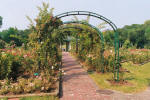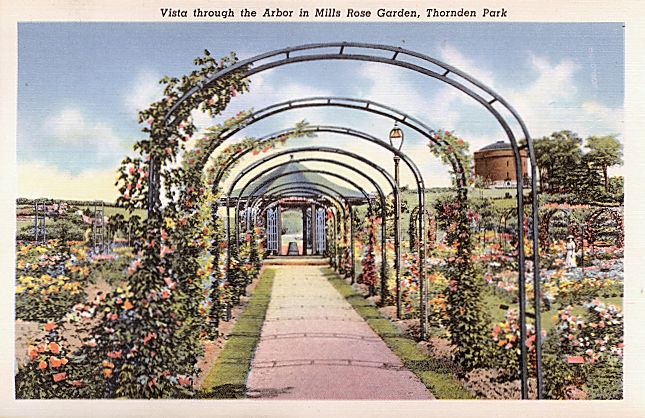Thornden Park |
||
|
Thornden Park was part of a 76-acre estate purchased in 1854 by James Hskins and later sold to Major Alexander Davis, who built a beautiful mansion here and name it "Thornden." Davis planted shrubs, groves of trees and perennials of all kinds on the estate grounds. He brought in tropical plants, created sunken gardens, and built a lily pond. Davis died in 1910 and in 1921 the City of Syracuse purchased Thornden for use as a public park. (Continued below) In 1924 the Edmond M. Mills Rose Garden was developed and it is still lovingly tended by the Rose Society. No expense was spared in renovating the mansion as a community house, onoly to have it burn to the ground in 1929 just as the renovations were completed. The residential area around Thornden Park developed as a "streetcar suburb." Together with Sedgwick Farms, this was the place to live in Syracuse at the turn of the century. Like Sedgwick, the area includes a large concentration of the works of distinguished architect Ward Wellington Ward (1875-1932). Ward's best work exemplifies the Arts and Crafts ideal. Along with furniture of Gustav Stickley, the windows of the Henry Keck Stained Glass Studio, and the porcelains of Adelaide Alsop Robineau. |
||


